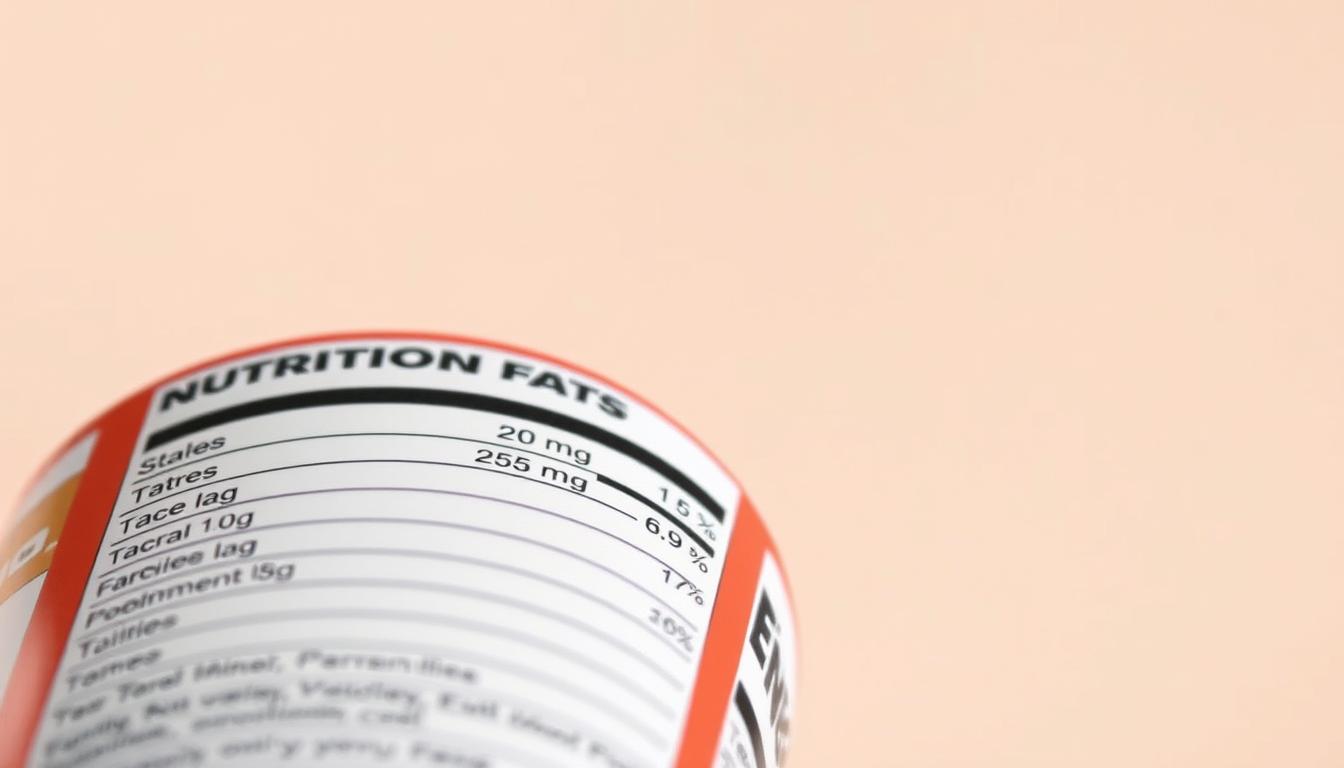Physical Address
304 North Cardinal St.
Dorchester Center, MA 02124
Physical Address
304 North Cardinal St.
Dorchester Center, MA 02124

Surprising fact: people who check the Nutrition Facts panel regularly have better diet quality and lower heart risk than those who don’t.
Ignore front-of-package hype. The back-panel facts and the ingredients list tell the real story about what’s in your food. Ingredients appear by weight, so shorter lists with whole foods usually mean less processing.
Serving sizes on many small packages are smaller than what most people eat. Multiply numbers to match your portion so calories, sugar, and other values line up with real life.
Use a simple scan: serving size first, then calories and key nutrients to limit or seek, then the ingredient order. This quick routine helps you make smarter grocery choices that support everyday health and performance.
Front package claims often create a shiny health halo that hides real content. Many cereals and granolas use buzzwords that distract people from high sugar or sodium counts on the facts label.
Ingredients list order is simple but revealing. Manufacturers list items by weight, so long lists often point to ultra-processed products while short lists usually mean whole foods.
Serving lines matter because numbers are per serving, not per package. If you eat more than one serving, calories, sugars, and sodium add up fast.
“Small swaps—less added sweetener, lower sodium, more fiber—add up over weeks and months.”
The first line—serving amount—sets the math for all calories and nutrients that follow. Start there and confirm the serving and number of servings per container before you read anything else.
Everything on this label is based on the printed serving size. If a package lists two servings but looks single-serve, treat totals as double unless you use the per package column.
Dual columns save time. Use the per serving column for one portion and the per package column when you plan to eat the whole item.
Write down the amount you will eat, then multiply. Two servings means two times the calories, sodium, sugar, and protein.
“If you plan the portion first, the numbers follow—and surprises disappear.”
Calories are only the start; the facts label tells you which nutrients shape hunger, heart risk, and recovery.
The standard 2,000-calorie baseline helps compare products, but your needs may differ. Start by scanning the mandatory list: calories, total fat, saturated fat, trans fat, cholesterol, sodium, total carbohydrate, dietary fiber, total and added sugars, protein, vitamin D, calcium, iron, and potassium.

Use the 2,000-calorie reference as a quick check. Compare percent daily value when available and scale grams up or down for your portion.
Check total carbs first, then fiber and added sugar. Aim for at least 2.5 g fiber per serving for a “good source” and 5 g+ for “high fiber.”
Limit saturated fat and avoid trans fat—watch for “partially hydrogenated” on the ingredient list.
Use grams of protein to assess meal fit. Keep sodium under 2,300 mg per day and compare items to find lower-sodium choices. Potassium supports fluid balance for active lifestyles.
“Use grams and %DV together to judge both absolute content and daily contribution.”
Percent daily values offer a fast snapshot of whether a nutrient helps or hurts your daily goals. This percent column on the facts label shows how much one serving contributes to a 2,000-calorie day. Use it as a quick filter when you shop or plan meals.
Think simple: 5% daily value or less is low; 20% or more is high. That rule works for any nutrient and speeds up smart choices without long math.
Seek higher percent values for fiber and key minerals and vitamin D, calcium, iron, and potassium. Aim for lower percent values on saturated fat, sodium, and added sugars and total sugars. Combine percent with grams for full context.

| Nutrient | Good if %DV is | Why it matters |
|---|---|---|
| Fiber | 20% or more | Helps fullness and gut health |
| Saturated fat | 5% or less | Lower risk for heart disease |
| Added sugars | 5% or less | Keep daily calories and spikes down |
| Vitamin D / Calcium / Iron | 15–20% or more | Support bones, blood, and immunity |
Tip: When you compare two items, match serving sizes and pick the label with better %DV patterns for your goals.
The top few ingredients act as the product’s fingerprint — they tell you what makes up most of the package. Ingredients are listed by weight, so the first three usually dominate the food’s composition.

Check those first entries. If refined flour, sugar, or syrup leads, the product likely leans processed. Whole grains, fruit, or nuts first means higher-quality foods.
Watch for many aliases. Cane sugar, high fructose corn syrup, maltose, rice syrup, fruit juice concentrate, molasses, honey, agave — they all count as sugars and can boost sweetener content without obvious labeling.
Prefer shorter ingredient lists with recognizable items. Long lists with additives, emulsifiers, and multiple sweeteners usually point to ultra-processed products.
“Ingredients by weight reveal the truth: heavy syrups can appear near the top, so read closely.”
A flashy badge or seal may make a product feel wholesome, even when the facts tell another story. Treat front claims as marketing. Always check the standardized back panel and the ingredient order for the real picture.
Health halos make people assume a product is better than it is. A low-fat badge can hide extra sugars or salt added to preserve taste. Use the back panel for proof.
Sugar-free means under 0.5 g per serving. Reduced sugar means at least 25% less than the reference product. No sugar added only means no sugars were added during processing — total sugars can still be high.
Fat-free and saturated fat-free are under 0.5 g per serving; low fat is ≤3 g and low saturated fat is ≤1 g. Trans fat claims can hide tiny amounts per serving; scan ingredients for “partially hydrogenated” oils and avoid them.
| Claim | Meaning | Watch for | Why it matters |
|---|---|---|---|
| Sugar-free | <0.5 g sugar/serving | Total sugars, fruit concentrates | May still contain calories and carbs |
| Low fat | ≤3 g fat/serving | Added sugars or sodium | Can trade fat for sugar |
| Whole grain / Organic / Gluten-free | Separate standards | Ingredient order, fiber, sodium | Doesn’t guarantee overall nutrition |
| Trans fat free | <0.5 g trans fat/serving | Partially hydrogenated oils | Avoid for heart disease risk |
Quick tip: Compare two similar products using the same serving size and the facts label to see past front claims.
Start comparisons by converting both items to the same serving or per 100 g basis. That simple step prevents misleading math from different package sizes.
First, align serving size so numbers are fair. Use dual-column panels when present to see per serving and per package quickly.
Next, favor higher fiber and lower saturated fat, sodium, and added sugars. Most adults need more fiber; aim for at least 2–3 g per serving in cereals and breads.
Scan grams and %DV together on the nutrition facts label. That shows both absolute amounts and daily impact.
“Match portions first — then the numbers tell the truth.”
Make a short routine before you drop an item in your cart. Check serving size, scan calories and key nutrients, then read the first few ingredients.
Keep a shortlist of better-for-you categories and use labels to verify each new product. Stock packaged foods with shorter ingredient lists, higher fiber, sensible protein, and reasonable sodium.
Plan your day by balancing higher-sugar or higher-sodium meals with lower ones. Use the facts panel to track totals across the day and pick swaps that keep taste without excess.
If you need tailored guidance—athletic goals, weight management, or medical conditions—consult a registered dietitian. With practice, these simple habits make healthy choices faster and more consistent.